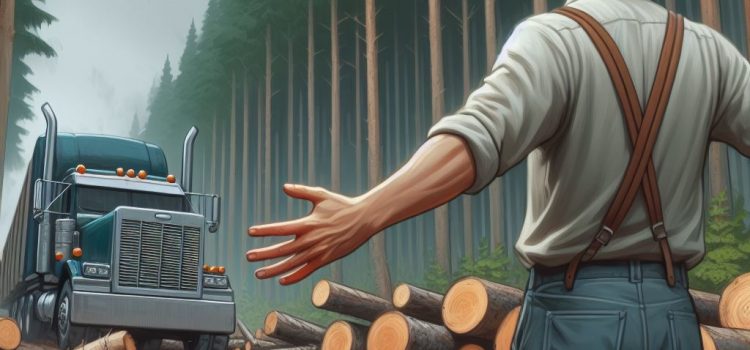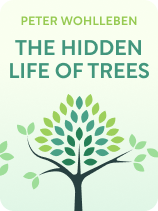

This article is an excerpt from the Shortform book guide to "The Hidden Life of Trees" by Peter Wohlleben. Shortform has the world's best summaries and analyses of books you should be reading.
Like this article? Sign up for a free trial here.
How many trees are at risk of extinction? Why are sustainable forestry practices necessary? How can arboreal mortuaries help save forests?
In his book The Hidden Life of Trees, Peter Wohlleben doesn’t just teach readers about the science of trees, it’s also a call to action to help save the forests. He lays out multiple ways that people and governments can help save the trees.
Here are the actionables that Wohlleben shares in his book.
Our Responsibility to Forests
Ultimately, The Hidden Life of Trees is a call to action to save the trees. Despite trees’ remarkable ability to adapt to massive shifts in climate and their high degree of genetic variation, which guards against total extinction, Wohlleben argues trees still need our help. He advocates for a more holistic, empathetic, and sustainable approach to our stewardship of forests.
(Shortform note: Despite their resilience, many tree species are facing extinction threats. According to a 2022 study, 1 in 6 tree species native to the US are at risk. Yet, only eight species are federally recognized as endangered or threatened, leaving others without conservation support. Climate change, exemplified by increased wildfires, poses a major threat. For instance, California’s sequoias, long considered invincible, lost up to 10,600 mature trees to the 2020 Castle Fire, illustrating the vulnerability of even robust species to environmental changes.)
First, if logging is a necessity, Wohlleben strongly advises implementing sustainable forestry practices. He stresses the importance of fostering forests with a mix of tree species and ages, as this strengthens biodiversity and protects against disease. He also advocates for minimal human intervention. Instead of clear-cutting, or removing large amounts of trees at once, Wohlleben recommends selective logging, a method that only removes a few trees at a time to preserve the overall health of the forest and allows trees to grow, age, and decay naturally. Moreover, selective, intermittent logging allows trees sufficient time for maturation and regeneration.
(Shortform note: Though not directly addressed by Wohlleben, fire management is a crucial sustainable forestry practice, particularly in certain ecosystems. Fires naturally promote tree regeneration and help maintain overall forest health. While suppressing fires is often necessary to protect human lives and property, it can inadvertently lead to an excessive buildup of vegetation, ultimately leading to more severe wildfires. Prescribed or controlled burns, which have long been practiced by indigenous communities in North America, mimic natural fire cycles and help safely manage forest ecosystems.)
Wohlleben offers additional innovative ways to protect forests and ensure their continued usefulness. One method gaining traction in some countries is the introduction of arboreal mortuaries, where cremated human remains are interred at the base of existing trees, providing nutrients to the tree and preserving the forest’s natural integrity. Arboreal mortuaries repurpose forests as cemeteries and protect them from unnecessary logging. Wohlleben also advocates for educational tourism opportunities that allow people to experience and learn about forest ecosystems, further fostering an appreciation that drives forest preservation.
(Shortform note: The increasing awareness of the environmental impact of traditional burial practices has led to a rise in interest in “green burials,” like those described by Wohlleben. Green burials not only reduce your carbon footprint and preserve natural habitats, but they can also save families thousands of dollars on funeral expenses. Funeral professionals say the biggest challenge for green burials is a lack of awareness and resources, but there are over 150 green cemeteries in the US and Canada. The Green Burial Council offers resources and a list of potential providers for people interested in a green burial.)
Finally, Wohlleben argues that the best thing we can do for forests is to recognize their innate value and leave them alone to live out their lives with dignity.
| Do We Need an Alternative Economic Model? Wohlleben argues that changing how we perceive trees and letting them be has the power to change the balance in our current environmental crisis. In his review in The New Yorker, Moor argues that Wohlleben fails to address the underlying cause of the crisis—an economic system predicated on growth. In Doughnut Economics, Kate Raworth argues that an economy based primarily on growth (and therefore intensive extraction of natural resources) is unsustainable. Raworth offers an alternative model. The central idea of the “doughnut economy” is to grow the economy enough to support the basic needs of all humans, but not so much that the economic growth exceeds the planet’s ability to regenerate resources that support life on Earth. Raworth’s conception of the post-growth economy requires the following changes: a negative-interest currency, tax reform, and breaking the culture of consumerism. She recommends specific policies to reform the global economy and de-emphasize growth. Applying the principles of doughnut economics to Wohlleben’s argument would require shifting our perception of trees from resources to essential components of a sustainable ecosystem. This would mean implementing policies and incentives that discourage clear-cutting and unsustainable extraction and instead encourage practices such as selective logging or agroforestry. |

———End of Preview———
Like what you just read? Read the rest of the world's best book summary and analysis of Peter Wohlleben's "The Hidden Life of Trees" at Shortform.
Here's what you'll find in our full The Hidden Life of Trees summary:
- The characteristics of trees and forests that make them so remarkable
- How trees in old-growth forests cooperate and communicate
- Actionables that humans can take to help protect the forests






